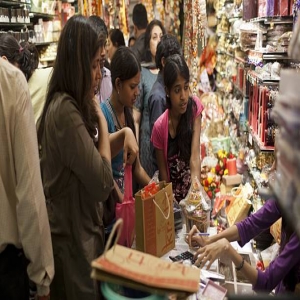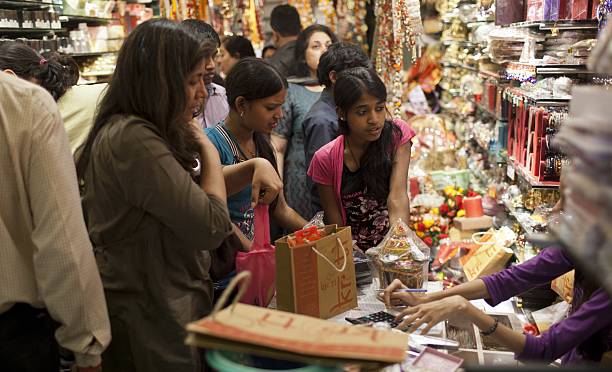
.png) Isaac Harold Gomes
Isaac Harold Gomes

As soon as elections are around, the ruling dispensation and the opposition camps start making tall promises of the economic upliftment of the aam aadmi if they are voted to power. But, in reality, what is the socio-economic standing of the ordinary working class of our country? How better is the condition of the middle class than it was before the regime changed? There are endless arguments and counter-arguments on this.
Experts opine that the middle class constitutes the backbone of India's economic prosperity. Therefore, it is widely believed that the role of this class will be significant if India has to become a developed economy by 2047, when the nation will complete 100 years of its independence after being under British Rule for 200 years (1747-1947).
Who are the middle class? The US-based Pew Research Centre projected the pre-Covid strength of the Indian middle class – defined as those earning between USD ($) 10 and 20 a day or Rs 25,000-Rs 50,000 a month – at about 99 million (9.9 crore). However, the estimates of how much a person should earn daily to be called the middle class continue to differ widely. Ridham Desai, MD of Morgan Stanley, says: "…a hundred million new households, which is 450 million people, which exceeds the population of US and the whole of Europe, are becoming middle class in the next 10 years."
According to a report by the World Bank and the Organization for Economic Cooperation and Development (OECD), those earning less than $2.15 per day are classified as poor, and those earning more than $2.50 per day are bracketed as lower middle class.
NITI (National Institution for Transforming India) Aayog hasn't made any such socio-economic stratification as the World Bank and OECD have. It has broadly laid out that in the current economic situation, persons earning between Rs 20,000 and 40,000 per month should be called the lower middle class; those earning between rupees forty thousand and one lakh per month should be termed the middle class; and people earning more than one lakh rupees have been placed in the upper middle class. This calculation has been made considering the financial condition of cities.
NITI Aayog, which replaced the Planning Commission in January 2015, serves as the government's apex public policy think tank and is tasked with catalysing economic development. Currently, it has four full-time members and 15 Union Ministers from the BJP and allies of the NDA as ex-officio members or special invitees.
On the other hand, the People's Research on India's Consumer Economy or PRICE has argued that the definition of the middle class cannot always be given based on a specific financial income. However, if a person's monthly income is roughly between Rs 1.09 lakh and 6.46 lakh, one can be bracketed as middle class.
It would be a mistake to think that the classification of the middle class is purely based on financial criteria. Researchers have also stratified it socially. At the top of that list is the educated middle class, those who have specific educational qualifications, various skills/job training, and permanent employment.
The second category will be the traditional middle class. Small businesspersons, farmers, and those engaged in art and culture have been placed in this category because they are engaged in the same type of livelihood, following family traditions.
The emerging middle class is the last category on this list. People in this category relish city life and advanced technology. They also spend heavily on consumer goods. This attitude to spending plays a big role in keeping the wheels of India's production cycle and, therefore, the economy on the move.
India has set itself a target of reaching an economy worth rupees five lakh crore by 2047. Financial analysts argue that this target will be difficult to achieve without the economic upliftment of the middle class.
In the last few years, the pattern of product movement in the Indian market has undergone a metamorphosis. Gen Z (people born between 1995 and 2010) has a penchant for buying the latest gadgets, fast foods, and processed foods. In addition, due to increasing health consciousness among the youth, the middle-class living in cities and semi-urban areas is also spending substantially on healthcare products/services.
Some experts believe that the challenges for the middle class are threefold: (1) the fast-changing economic scenario of India, (2) readiness to live with Artificial Intelligence (AI) to survive in the workplace, and (3) dealing with inflation.
Presently, 31% of India's total population comprises the middle class. By 2047, this will increase to 61%. Thus, India's middle class will be a huge attraction as the world's largest consumer product and service market in the next one-and-a-half decades.
The average income statistics of our people show that Maharashtra and Delhi have the highest number of middle-class people. This is followed by Gujarat, Bihar, and Uttar Pradesh. In terms of expenditure, the middle class spends eight times more than the poor.
Last July, while presenting the entire budget for the financial year 2024-25 in Parliament, Union Finance Minister Nirmala Sitharaman said that the middle class would get a significant relief in income tax. This will give them more disposable income in their hands. To this end, she announced an increase in the standard deduction from Rs 50,000 to Rs 75,000 and said that this step has been taken with the middle class in mind. She also assured that necessary steps would be taken to further simplify the new tax regime. Nevertheless, as per Policy Circle, dated October 10, 2024, it has been reported that people, particularly from the middle class, are paying more in taxes than many large corporations.
Inputs from Anandabazar Patrika November 16, 2014.